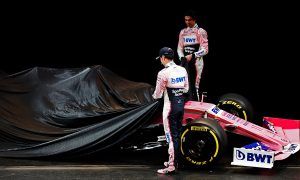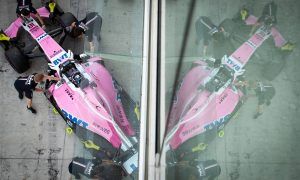
Force India believes that the FIA's decision to implement the Halo cockpit protection device has cost them around a million dollars in development.
Technical director Andrew Green said that the introduction of the Halo meant that they couldn't just evolve last year's chassis. Instead, they had to go back to the drawing board to solve issues it caused.
"It was a huge challenge," Green told reporters at the Circuit de Barcelona-Catalunya on Monday. "For a team like us it was massive.
"Expense-wise it’s huge because we had to do a new chassis," he pointed out. "You’re looking at hundreds of thousands if not millions of dollars to put the Halo on the car."
The team had already invested a considerable amount with last year's aerodynamic and tyre regulation updates. It hadn't expected another major upgrade just 12 months later.
"We wouldn’t have anticipated doing a new chassis this year given the amount of changes we made last year," Green confirmed. "For a team like us, we’d try to get two years out of the chassis if possible."
The problem was exacerbated by the late notice of the decision. The FIA only decided to make the Halo mandatory during last year's summer hiatus. Teams were already a long way down the road developing their 2018 cars.
“It was late summer, autumn time before we actually had a specification of Halo to put on the car,” explained Green. "Even then we didn’t know what the homologation test was going to be.
"To try and design the chassis, not knowing what was going to be bolted to it and what loads would be inflicted on it was tough.
"We knew we were going to end up with one shot to get it right and if we’d’ve failed we wouldn’t be sitting here now," he added. "We’d be left with a chassis - and lots of bits!
"It was a big challenge and the architecture of the car was changing right up until the last minute," he said. "It’s a commendable effort by the team to do the job, pass first time and get us here."
The aerodynamic impact of the Halo on the car means the team will still be working on it for weeks to come.
"[The Halo] is not designed to be an aerodynamic device. It doesn’t do us any favours in that department.
"It still requires a lot of work to mitigate the issues that it causes," Green said. "We’re still actively working on that. We won’t have a solution until we get to Melbourne.
"I’m confident we’ll have it under control by then," he insisted. "We’re confident the parts we’re bringing to the car will sort it out."
Gallery: The beautiful wives and girlfriends of F1 drivers
Keep up to date with all the F1 news via Facebook and Twitter






